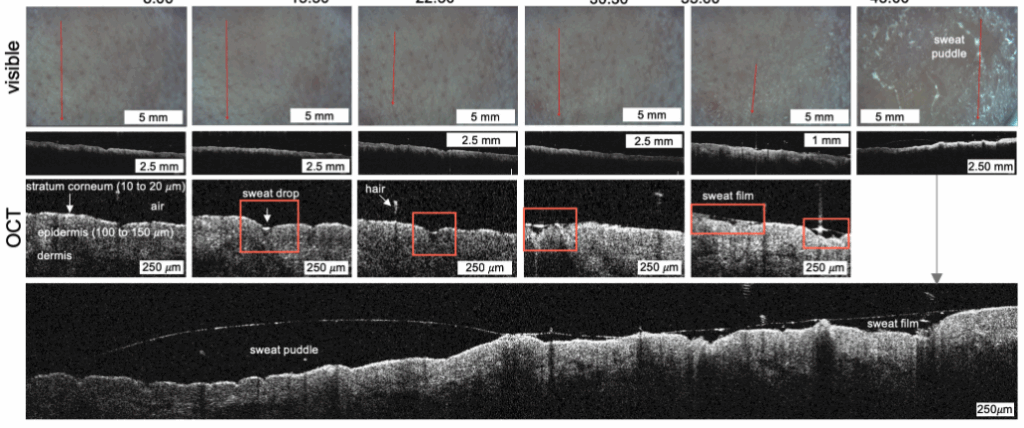Sweating is important to human thermoregulation, thermal comfort, illness diagnosis, and hygiene product development. However, little is known about how droplets emerge and evaporate from our sweat glands. The scale of these phenomena is in-between molecular processes that drive sweat generation revealed by biochemists and macroscopic sweat rate measurements performed by physiologists. Engineers have studied evaporation across all these length scales but only in non-biological settings. We use three advanced imaging techniques to provide a unique view of droplets during various sweating stages. The “multi-pore level” imaging is integrated with novel wind-tunnel shaped ventilated capsule that allows for sweat rate measurement in realistic flow conditions. To identify the main physical mechanisms underlying sweat evaporation, high-resolution photographs and videos are interpreted with theoretical modeling and additional experimentation with artificial sweating surfaces.
Co-PIs: Stavros Kavouras (ASU)
Funding: National Science Foundation
Relevant contributions:
Jose, C., Joshi, A.,Viswanathan, S., Nash, S., Sadeghi K., Kavouras, A.S., Rykaczewski, K.* A micro-to-macroscale and multi-method investigation of human sweating dynamics, Journal of the Royal Society Interface, (2025).

Jaiswal, A., Jose, C., Ramesh, R., Nanani, V., Sadeghi, K., Joshi, A., Kompally, K., Pathikonda, G., Emady, N.H., Bheda, B., Kavouras, A.S., Rykaczewski, K.* Simultaneous Imaging of Multi-pore Sweat Dynamics and Evaporation Rate Measurement using Wind Tunnel Ventilated Capsule with Infrared Window, iScience, (2024).




